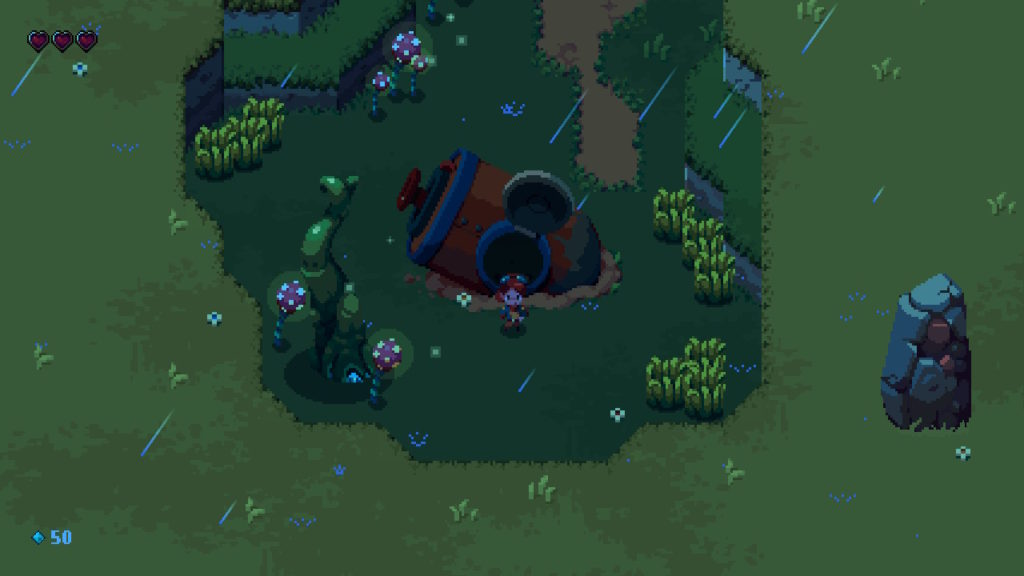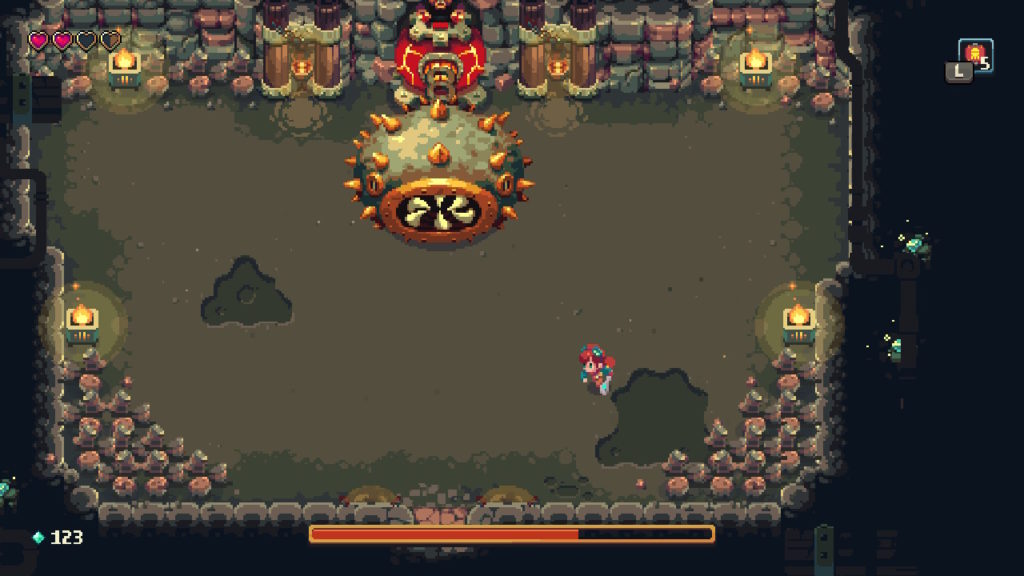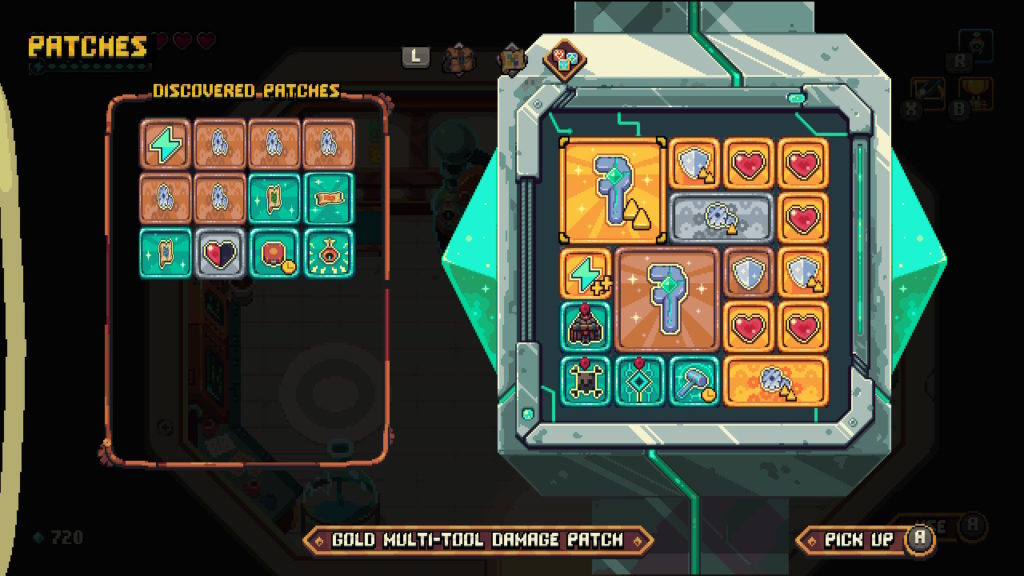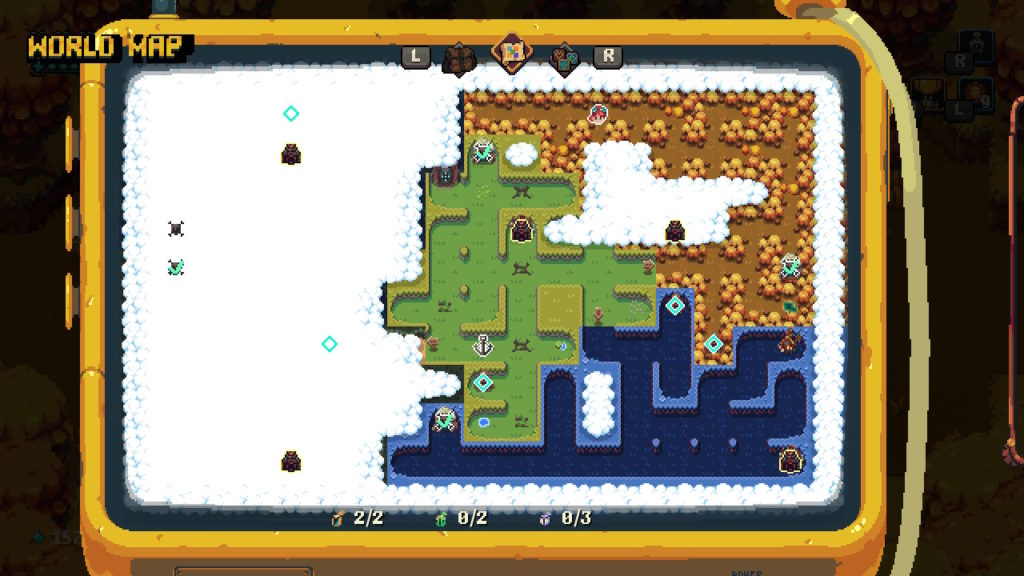- Genre: ARPG
- Platform: Switch
- Also Available On: Steam (Windows/Mac), PS4, Xbox One
This one’s kind of been floating around in my brain for a while. One of the folks working on this did some contract work with my team a couple years ago at Tripwire, and I couldn’t be more thrilled to see the game finally come out. I’m even more thrilled to find that it lives up to what I was envisioning back when I was hearing their plans. While it’s easy to look at this and shake it off as a Link to the Past clone, the game makes some clever use of roguelike mechanics to provide both a way to change the environment throughout the game, as well as a positive feedback loop to the process of dying. It’s an interesting change to a genre that typically penalizes dying, and it ended up working out well.

Let’s get the simple things out of the way in a real hurry. The game uses an entirely pixel-based visual style and it’s pretty damn gorgeous. The soundtrack is also fairly catchy and never started to wear on me despite hearing the same general set of themes throughout each region. Yes, the core gameplay loop here is LttP. You have a melee weapon that swings in an arc. You run around the environment killing things for upgrades. You eventually get to pattern-based bosses that you take out to get your big upgrades. That all is pretty familiar to fans of the genre, and really it’s done well here. It feels mechanically solid, and probably most importantly, I was never feeling cheated if I was taking damage. If I was taking a bunch of damage, it was entirely my fault. It’s worth noting that damage does ramp up REALLY fast here, and it’s easy to get one shot later in the game if you’re not paying attention. That’s entirely where the roguelike mechanics start to come into play.

The first thing to note is that the world changes each time you play through it. This plays a nice balance of randomness and non-randomness in that the regions are always in the same general area (desert is west, snow is north, etc) but the regions themselves are fairly randomized each run. There’s always going to be a set of standard features in each region (boss dungeon, random enemy dungeon, an area to pick up an upgrade, etc) but the rest of the area is going to be pretty different between runs. Sometimes you’ll find random underground areas with currency to grab. Sometimes you’ll find areas with people that you can rescue. Sometimes you’ll find areas with side-quest collection stuff to do. Basically, you’ll always have some reason to both move forward to new spots, but also return to old spots just to see what else you can find.
The core hub that you end up at on death also follows the roguelike pattern of slow incremental upgrades. There’s a main shop with player upgrades for purchase that also serves as a spot to handle the equipment chain. There’s a spot that can be upgraded that provides some free consumable items (ex: health potions, bombs, etc) that you can grab before going down for a world run. There’s a shop that can be upgraded to build out secondary ranged items. This is also the core spot where you’re going to find a lot of the lore of the game. Overall the town serves its purpose well as a bit of a power curve spot for the player. It’s easy to get around in the town, the purpose of the shops is always super obvious, and you’re going to be finding some reason to dump all your currency into something before heading back down to the main game world.

However, the main power curve comes all together in the hammer equipment. The hammer is both the main weapon in the game, as well as the main equipment handler. It can be packed with a bunch of upgrades ranging from damage to armor to health to map helpers and more. However, this takes the form of a grid-based screen that honestly reminded me a lot of the sort of classic PC ARPG approach. These upgrades all have some specific grid size and shape, so you spend a bunch of time min/maxing both the upgrades themselves, as well as the space they take up within the grid to get everything you want packed in there. As an example, a shield upgrade is a 1×1 square, attack upgrades are 2×2, but something like the gadget power is a 2×1 bar. The upgrades of common types can also be combined at a cost into more powerful versions from bronze to silver to gold.
This process of upgrading and playing a bit of inventory Tetris is the core power curve loop of the game, and it’s really effective at playing into how I got through the game. I initially started off stacking health upgrades just to stay alive. As I got more comfortable with the game mechanics, I started backing off of health and going more towards offensive upgrades. However, boss fights started doing a lot of damage all at once, so I started pulling some direct armor in to keep the individual hits down to smaller amounts. It was a really fun way to manage my overall power, and is a lot more interactive than the typical ARPG style of hunting a dungeon for the same direct upgrade that everyone else was going to take.

For as cynical as I can often be about working in the game industry, it’s always fun to see something come out made by folks you know and have worked on. It’s even better when the thing they’ve been working on as a passion project comes out and is a lot of fun to play. This is definitely one of those cases. It’s a game in a small niche genre mix made by a small team because it’s what they wanted to make. If the idea of playing a roguelike Link to the Past sounds at all appealing, this is definitely worth the play.
